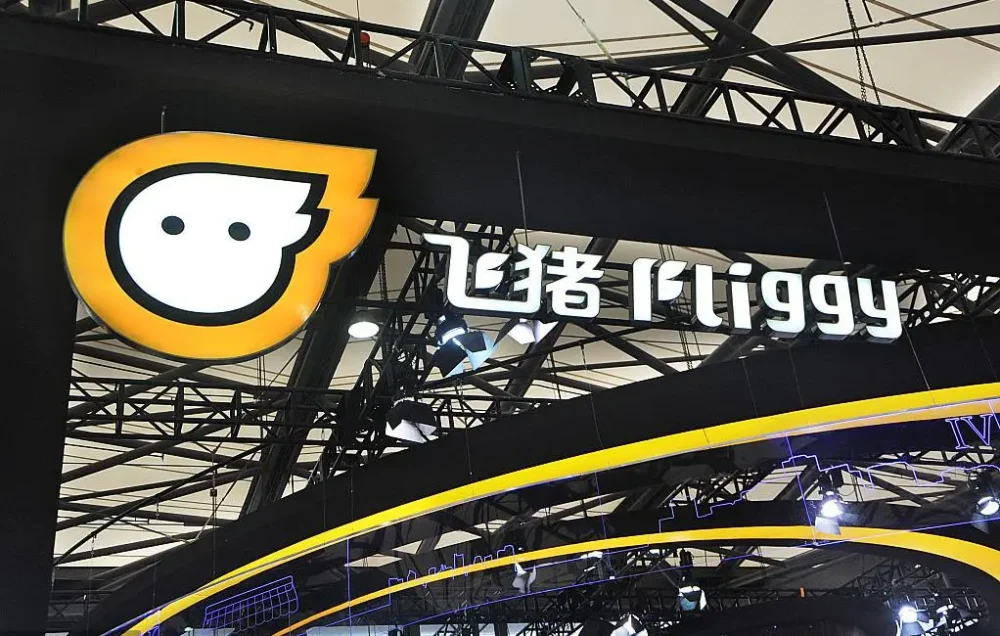InfluChina represents a customized method to influencer marketing within the Chinese market, focusing on cultural aptness and data-driven methodologies to effectively engage the nation's extensive social media user base.
Comprehending the diverse classifications of Chinese influencers, consisting of mega influencers who provide broad direct exposure and micro influencers who accommodate specific niche audiences, makes it possible for brand names to devise precise strategies that promote engagement and drive conversions.
Effective project execution necessitates careful factor to consider of group aspects, content creation, and spending plan task. A meticulously crafted InfluChina method has the possible to strengthen brand name exposure, reliability, and return on financial investment (ROI)
Diving into the intricacies of China's influencer landscape empowers brands to reveal chances for enhancing their marketing ventures and protecting long-lasting success.
Key Takeaways
InfluChina empowers organizations to effectively engage Chinese consumers through culturally nuanced influencer marketing strategies, promoting brand reliability and trust by partnering with Chinese KOLs (Key Opinion Leaders) A custom influencer approach, aligned with distinct organization goals, is important for success in the Chinese market. To enhance project technique, understanding the diverse spectrum of Chinese influencer types - consisting of mega, macro, medium, and micro influencers - is crucial. By leveraging data-driven insights and exact classification, businesses can streamline and make the most of results influencer marketing spending plans in China, ultimately boosting their brand's regional track record and resonance.
Reaching Chinese Customers Efficiently
Reaching Chinese customers demands a culturally attuned strategy, leveraging influencer marketing as a pivotal channel for item promotion in China.
By harnessing digital engagement techniques, brands can develop significant connections with this diverse population, predicated on the principle that cultural relevance is a critical element of successful influencer marketing.
Chinese customers display a propensity for engaging with content that resonates with their worths and interests. Data-driven insights highlight the significance of partnering with Key Viewpoint Leaders (KOLs) who possess an extensive understanding of local subtleties, consequently augmenting brand name reliability and trust.
Accepting influencer marketing makes it possible for brand names to navigate the detailed Chinese market effectively, yielding considerable rois. This technique facilitates the revamping of sales techniques, guaranteeing brand names can prosper in China's distinct digital landscape.
Structure Enhanced Brand Name Presence
Establishing a robust online presence is crucial for brand names in China, where approximately 850 million customers actively engage on social networks. To construct boosted brand exposure, leveraging prominent Key Viewpoint Leaders (KOLs) on popular Chinese social media networks is important. Reliable partnerships with KOLs can substantially increase brand name awareness and enhance market presence.
Embracing data-driven techniques makes it possible for brand names to select ideal platforms, such as Xiaohongshu and Douyin, and identify suitable influencers for collaboration. Tailoring methods to particular audience requires assists in genuine connections, eventually driving business development in the Chinese market.
By focusing on cultural authenticity, brand name storytelling, and nuanced understanding of local preferences, brand names can optimize audience connection and foster long-term loyalty.
Comprehending Chinese Influencer Types
In China's detailed social networks landscape, categorizing influencers is a crucial action in guaranteeing campaign efficiency, as differing degrees of impact and audience engagement significantly effect results. Comprehending Chinese influencer types is important for targeted marketing techniques.
Mega influencers, with 500,000 to 1 million fans, prioritize exposure, while macro influencers, with 100,000 to 500,000 followers, drive branding and conversion. Medium influencers, having 10,000 to 100,000 fans, cultivate trust and stimulate conversion. Micro influencers, with 1,000 to 10,000 followers, penetrate niche markets. Secret Opinion Leaders (KOLs) differ from conventional influencers as field specialists, providing authentic brand recommendations.
Reliable influencer marketing demands cultural sensitivity, brand name authenticity, and strategic platform selection. By leveraging the ideal influencer type, brands can make the most of audience engagement, drive conversions, and establish a strong market presence in China.
Precise influencer categorization makes it possible for customized marketing techniques, guaranteeing ideal campaign outcomes. This nuanced understanding of Chinese influencer types fosters notified marketing decisions, ultimately driving business success in China's dynamic market.
Developing Custom-made Influencer Techniques
Developing an efficient influencer technique in China requires a tailored approach that aligns with a brand's unique organization objectives and resonates with the target audience.
Understanding the demographics and choices of Chinese customers is important, as they are highly active on social networks platforms, with 70% of online users under the age of 35.
To captivate this group, content creation ought to focus on immersive and interactive experiences that promote engagement and drive conversions.
Partnering with influencers who have a strong following within the target market can significantly improve brand name awareness and trustworthiness.
By leveraging platforms like Xiaohongshu and Douyin, brands can make sure optimal audience connection, magnify their presence in the market, and eventually drive organization development.

A well-crafted influencer strategy can reduce the dangers associated with influencer marketing, such as brand reputation damage, and supply a quantifiable roi.
Browsing Influencer Marketing Expenses
Browsing Influencer Marketing Costs in China
Developing a reliable influencer method in China needs consideration of the financial ramifications of partnering with Secret Opinion Leaders (KOLs) Campaign budgeting is vital to ensure that influencer settlement aligns with business goals.
Key Expense Factors To Consider
- Influencer Rates: Vary by specific niche, audience size, and content complexity, with mega influencers commanding higher rates, as much as $10,000 per post.
- Micro-influencers, however, might charge lower rates, providing a more affordable alternative.
- Content Production Expenses: Additional expenses for premium content, such as video production or photography, can considerably affect campaign budgeting.
- Project Period: Longer campaigns need more budget plan allotment for sustained influencer partnerships, highlighting the value of careful planning and budgeting.
- Efficiency Metrics: Tracking engagement rates, conversions, and ROI is essential to enhance future project budgeting and influencer compensation, making sure a data-driven technique to influencer marketing.
Enhancing Campaign Budgeting
To ensure efficient project budgeting, brand names need to carefully consider these crucial expense elements, prioritizing openness and clear interaction with KOLs.
Often Asked Questions
What Is the Normal Duration of an Influencer Marketing Campaign in China?
In China, influencer marketing projects typically span 2-6 months, contingent upon the project's goals and planning.
Short-term projects, typically 1-2 months, focus on item launches or promos, generating buzz and driving sales.
Alternatively, longer-term campaigns, usually 4-6 months, focus on audience engagement and brand name awareness, fostering loyalty and advocacy.
Information analysis indicates that 3-month campaigns yield optimal results, allowing for enough audience engagement, content development, and project optimization.
Effective project planning is essential, making sure a strong online existence, making the most of return on financial investment, and lining up with the brand name's general marketing strategy.
How Do I Measure the Success of an Influencer Marketing Campaign?
Determining the success of an influencer marketing project requires a diverse method that incorporates numerous crucial efficiency indicators (KPIs) and metrics. To properly assess project efficiency, track engagement rates, reach, and conversions, as these metrics provide insight into audience interaction and participation.
Conduct a detailed roi (ROI) analysis to examine the project's monetary effect and determine its total worth. Keeping track of website traffic and social networks follower growth assists determine the project's impact on brand awareness and online existence.
Examining hashtag efficiency offers a much deeper understanding of the campaign's reach and resonance with the target market. Leverage information analytics tools to examine the project's effectiveness, identify locations for enhancement, and inform data-driven choices for future optimizations.
Regularly evaluating project metrics makes sure a high roi, informs strategic enhancements, and makes it possible for adaptive campaign management. By adopting a data-driven approach, online marketers can refine their influencer marketing techniques, enhance campaign efficiency, and make the most of the total effect of their marketing efforts.
Can I Work With Influencers Outside of the Significant Chinese Social Media Platforms?
Working together with influencers beyond significant Chinese social media platforms can be a reliable method for brands. By exploring specific niche online forums, specialized blog sites, and emerging social networks apps, brand names can use target market sections and increase their influencer marketing ROI.
Micro influencers on these alternative platforms frequently have actually highly engaged audiences, supplying a special chance for brands to broaden their reach.
A data-driven method is essential in determining optimal platforms and influencers, ensuring that the cooperation lines up with the brand name's objectives and target market. By leveraging alternative platforms, brand names can diversify their influencer marketing method, decreasing reliance on major social networks platforms and increasing their total marketing efficiency.
This method also enables brands to get in touch with audiences in a more significant and nuanced method, promoting brand awareness and commitment.
What Kind of Content Do Chinese Influencers Generally Produce for Brand Names?
Chinese influencers produce diverse material for brand names, incorporating sponsored posts, item reviews, tutorials, and see here interactive livestreams that foster audience engagement through Q&A sessions and giveaways .
By leveraging short-form videos, post, and social media stories, influencers tailor their material to their unique tone and style, promoting brands authentically and keeping audience trust.
This tactical technique drives engagement, enhances conversion rates, and underscores the influencers' dependability and credibility in the Chinese market.
Are There Any Specific Laws or Laws Governing Influencer Marketing in China?
In China, rigid policies govern influencer marketing, prioritizing transparency and authenticity. The regulatory landscape mandates that influencers explicitly reveal sponsored content, sticking to the Marketing Law and Cybersecurity Law. Non-compliance can result in penalties and reputational damage. Browsing these laws is crucial for brands and influencers to maintain consumer trust and avoid regulatory repercussions.
The Marketing Law, reliable since 2015, restricts deceptive or false marketing, while the Cybersecurity Law, enacted in 2017, concentrates on data protection and online content regulation. Additionally, the Arrangements on the Administration of Web Info Solutions and the Interim Provisions on the Administration of Web Marketing further enhance the regulative structure.
Reliable influencer marketing in China requires a detailed understanding of these regulations and laws. Brand names should make sure that influencers clearly label sponsored material, preventing unclear or deceptive language.
Moreover, influencers need to verify the credibility of promoted product and services, avoiding making incorrect claims or misstatements. Non-compliance can cause extreme repercussions, including fines, suspension of social networks accounts, or even prosecution.
As the influencer marketing landscape continues to evolve, regulatory compliance stays necessary for maintaining customer trust and avoiding reputational damage.
Conclusion
Influencer marketing in China empowers organizations to get in touch with target audiences, develop trust, and drive sales through customized strategies lined up with specific business goals. Leveraging diverse influencer classifications and browsing cultural nuances enhances brand credibility and visibility. A data-driven approach and affordable techniques are important for successful influencer marketing in China, opening growth and expansion chances.
It utilizes conceptual and denotative significance by exactly conveying the principle of influencer marketing in China. Social meaning is included by acknowledging the role of influencer marketing in establishing trust and trustworthiness. Thematic meaning is preserved by focusing on the core idea of influencer marketing in China.
In China, rigid regulations govern influencer marketing, prioritizing transparency and authenticity. The regulative landscape requireds that influencers explicitly disclose sponsored material, sticking to the Marketing Law and Cybersecurity Law.Influencer marketing in China empowers services to connect with target audiences, develop trust, and drive sales through tailored strategies aligned with specific organization goals. Leveraging diverse influencer categories and navigating cultural nuances boosts brand reliability and presence. A data-driven method and economical methods are crucial for successful influencer marketing in China, opening development and growth chances.
 Ben Savage Then & Now!
Ben Savage Then & Now! Jenna Von Oy Then & Now!
Jenna Von Oy Then & Now! Macaulay Culkin Then & Now!
Macaulay Culkin Then & Now! Terry Farrell Then & Now!
Terry Farrell Then & Now! Rossy de Palma Then & Now!
Rossy de Palma Then & Now!